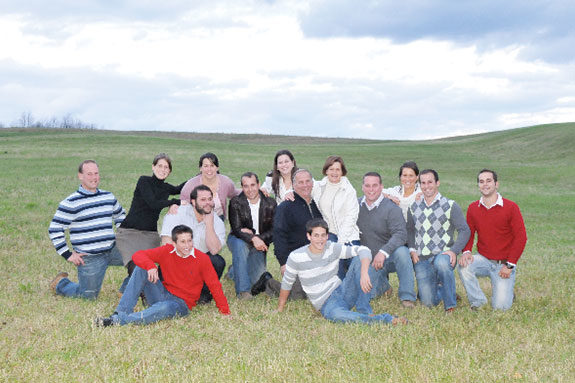Since they live in the Appalachian Mountains, they farm on side hills continuously. That topography has limited the type of farming they can do to pasture and hay production.
A combination of high altitude, cooler weather and high humidity favors a grassy type of hay – timothy, orchardgrass and natural prairie grasses.
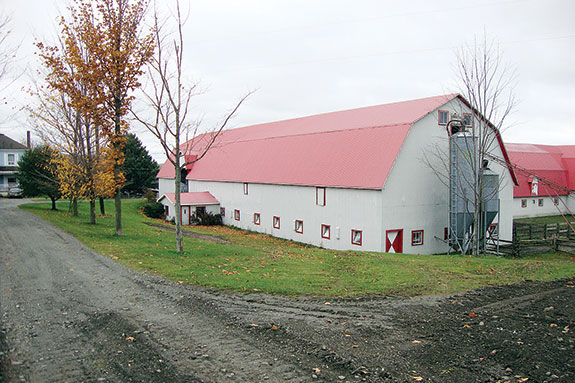
Because of their location, the crop is very luscious and short, which requires a very extensive fleet of equipment.
Three round balers are used for the local market and their own herd of several hundred pureblood Charolais beef.
They have over 30 tractors, four disc-mower conditioners (13 feet wide), three large hay tedders (30+ feet wide), three large double rotary rakes, five small balers with specially designed accumulators, grouping 18 bales or 36 as required (the sons also own one each) and four super-conditioner macerators (with two more owned by their sons).
They usually macerate 200 to 500 acres at a time based on the weather forecast. The units have been in operation as early as 3 AM, though the usual start time is 4 to 5 AM.
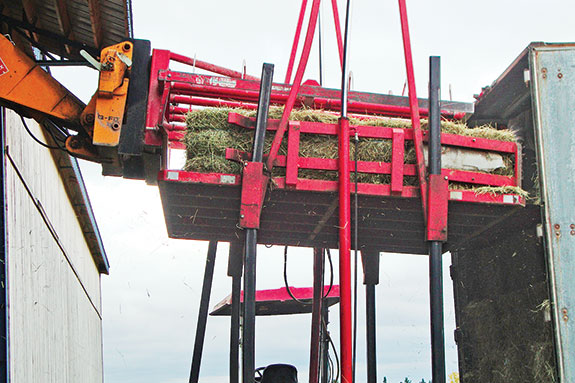
Early-morning dew allows a better removal of the wax from the stem for a faster dry-down and much softer hay, which is appreciated by the animals.
Following the maceration, the tedding begins; depending on the weather there is at least one pass, though it could need as many as three.
Transportation from the field is done with specially-designed farm wagons. These wagons feature hydraulic gates to hold the load intact on the side hills.
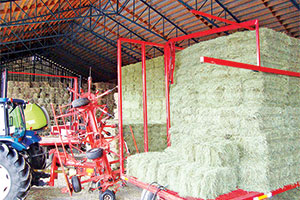
The bales are loaded with grapples fitted on the front-end loader.
Two wagons hold 432 bales each, five of them 324 bales each. Unloading and reloading are all done with a grapple attachment mounted on a telehandler.
For adverse weather conditions, the Bouffards have designed and built two large hay curing barns which will each hold 3,000 bales at a time, and a unique elevator to load the dry box trailer without manual labor. They can load 700 to 850 bales in less than one hour.
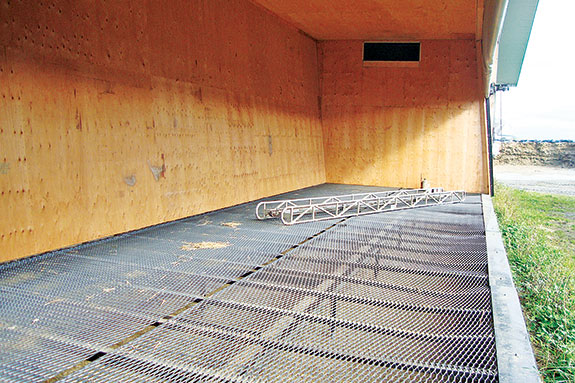
Curing is done by dehumidification. Warm air (80 to 85ºF) is fed to the top of the haystack; moist air is vacuumed at the bottom and recirculated continuously through a compressor.
The heat source is provided by an electric element during hot summers. In the fall they have two hydroponic wood furnaces on wheels to supply extra heat; this is cost-effective as the mountains are full of firewood.
Curing could last from 12 to 40 hours, depending on the moisture content of the hay. Their goal is to drop moisture from 20 to 32 percent to an 8 to 12 percent finished product.
After curing, the dry hay is stored in several large buildings designed for maximum aeration and maximum room for the telehandler during stacking and removal.
These buildings are all equipped with curtain doors electrically operated to help the hay keep a good color, and blue twine is used exclusively to enhance the color of the hay.
The Bouffards’ major customer base is located in the Northeast U.S., from Maryland north. Over 200 regular clients are serviced by two of their sons with their own transports, resulting in maximum control on the quality and warranty issues, if any arise.
Their motto is “We stand by our product 100 percent.” Part of the crop also travels to Florida, one or two loads per week via independent truckers.
They also do custom work for neighboring farms on request, mostly macerating and round baling, and operate a feedlot which will hold up to 1,600 head. In addition, they own a medium-size grain handling storage and drying complex for small grain, wheat, barley, etc.
Putting each other and religious faith first and foremost in their busy lives, as well as making smart decisions, has kept this close-knit family in business over the years.
They share the workload and every one of the children are somehow involved in the farm or cattle operation. Hopefully this large family will continue to equal large hay production, and they will be around for many years to come. FG
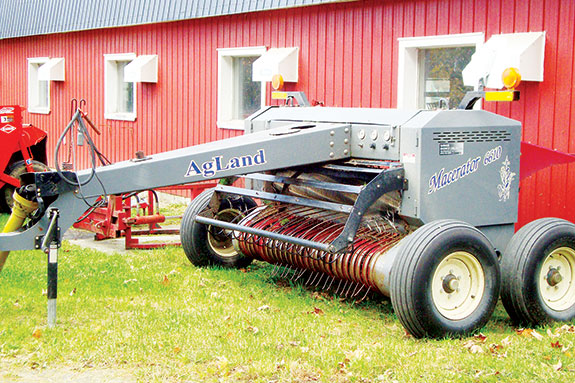
What is maceration?
Maceration (sometimes called “super conditioning”) is a process that shreds the stems of forage crops for faster drying times.
The pull-type machine consists of a pick-up and two sets of rollers.
The machine feeds the crop through the rollers for aggressive shredding and crimping.
The first set of rollers is made of rubber; they do not intermesh but spiral in opposite directions.
The second set of rollers are steel and rotate faster than the rubber rollers. The top steel roller rotates at a slower rate than the bottom one.
This results in a longitudinal split in the stem which helps to increase drying rate. The degree of maceration can be adjusted by changing the air pressure settings on the machine.
Cost for these types of machines is higher than regular conditioners, but if you need to get hay dry quickly, this may be an option for you.
For the Bouffard family, using this equipment has helped them be able to produce large quantities of high-quality hay, even under adverse weather conditions.
PHOTOS
FIRST: Alain & Pauline Bouffard together with their 12 children live in Ayer’s Cliff, Quebec, Canada.
SECOND: Some of the cattle and equipment barns located on the Bouffard family farm. Inset:
THIRD: Loading of the trucks can be done without manual labor with this unique hay loader.
FORTH: Transportation of hay from the field is done with wagons with hydraulic gates to hold the load intact on the side hills.
FIFTH: Curing is done in a dehumidifier where warm air is fed to the top of the stack and moist air vacuumed out at the bottom, recirculating the air through a compressor.
SIXTH: Maceration Machine. Photos courtesy of Marc Cote.
